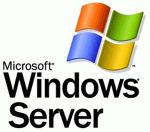Vista Workshop: More RAM, More Speed
Supported Memory Size - Server Operating Systems
The server operating systems built around NT technology have supported memory sizes greater than 4 GB for years now, using a feature called Physical Address Extension (PAE). The compatibility issues that have plagued Windows XP do not exist in the server arena, as the variety of devices and drivers used here is much smaller. Also, the manufacturers are much more conscientious about validating their drivers than is the case in the desktop space.
| Memory Limit | ||
|---|---|---|
| Windows Server 2008 | 32 bit | 64 bit |
| Datacenter | 64 GB | 2 TB |
| Enterprise | 64 GB | 2 TB |
| Standard | 4 GB | 32 GB |
| Web Server | 4 GB | 32 GB |
After its initial launch, Windows Server 2003 was extended and offered as version R2. Additionally, Service Pack 2 is available for the original version, which also increases the amount of supported memory. Thus these versions of the server OS are listed twice in the table below.
| Memory Limit | ||
|---|---|---|
| Windows Server 2003 | 32 bit | 64 bit |
| Datacenter SP2 | 128 GB | 2 TB |
| Enterprise SP2 | 64 GB | 2 TB |
| Standard SP1 | 4 GB | 32 GB |
| Datacenter R2 | 128 GB | 1 TB |
| Enterprise R2 | 64 GB | 1 TB |
| Standard R2 | 4 GB | 32 GB |
| Web Edition | 4 GB | - |
| Small Business Edition | 4 GB | 128 GB |
Get Tom's Hardware's best news and in-depth reviews, straight to your inbox.
Current page: Supported Memory Size - Server Operating Systems
Prev Page Supported Memory Size - Windows Vista And Windows XP Next Page More RAM - Additional Memory Used By Windows